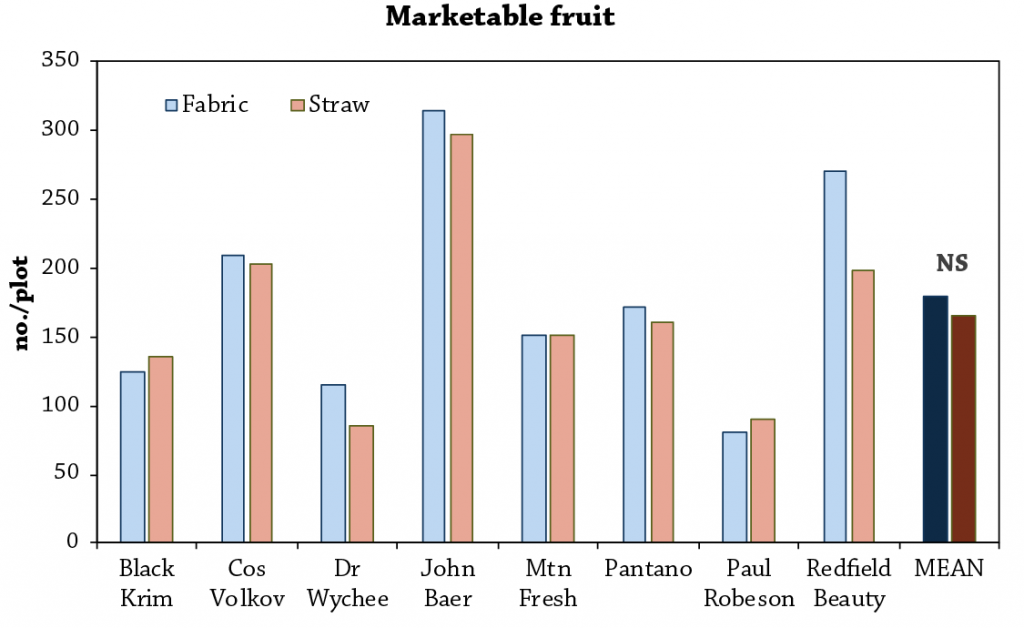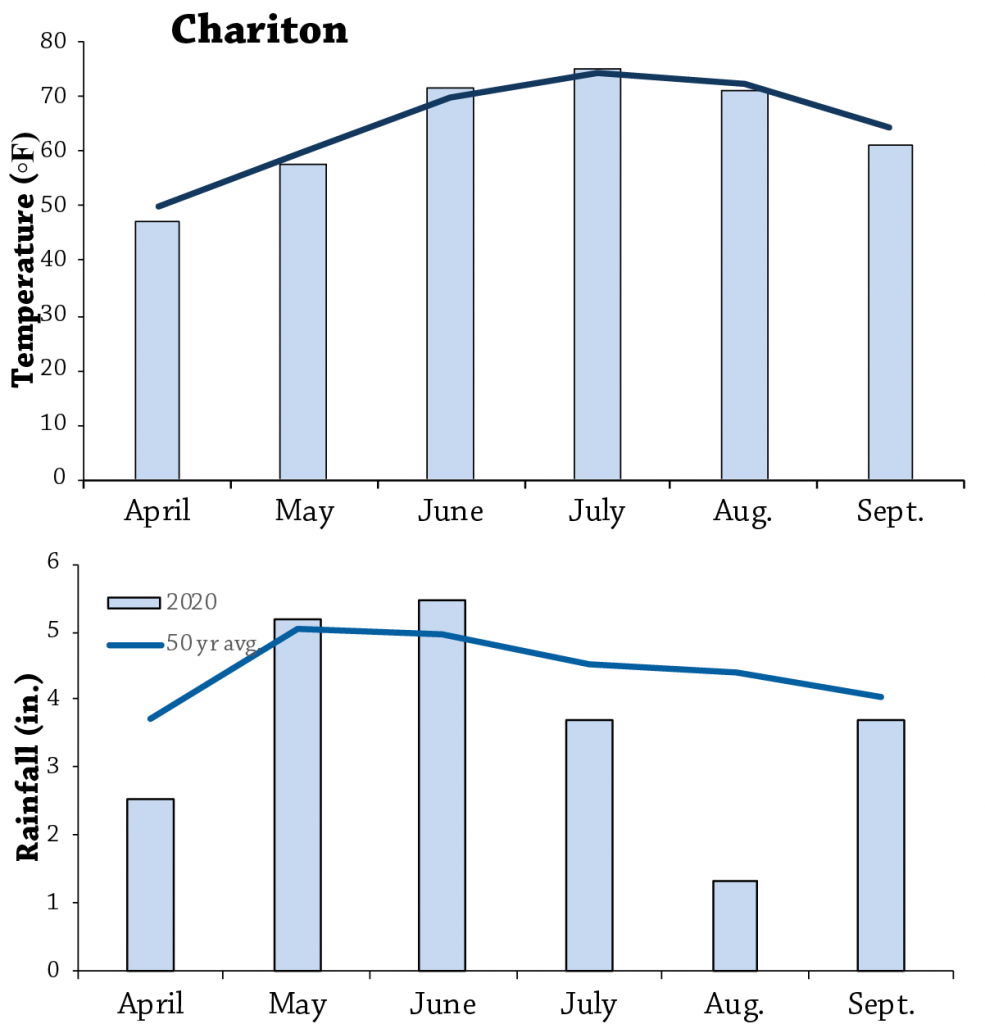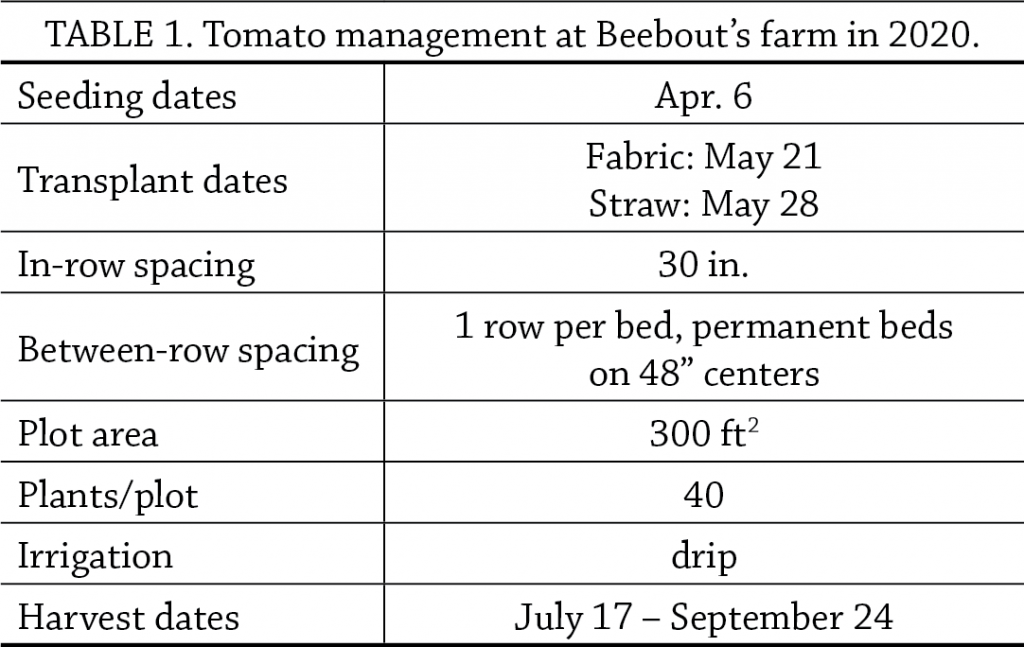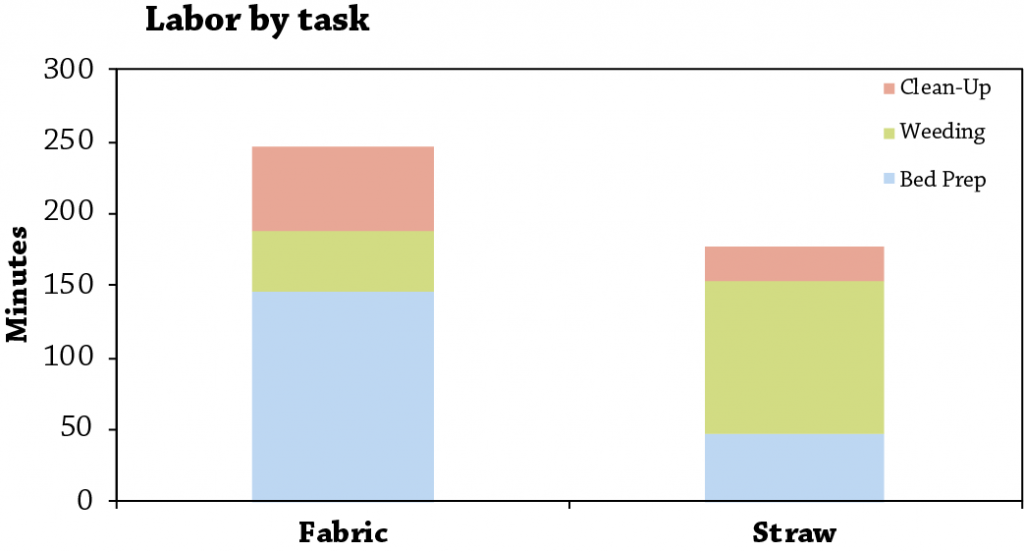This research was funded by Ceres Trust.
In a Nutshell:
- Fruit and vegetable farmers commonly use mulch as both a weed suppressant and as a way to maintain soil moisture.
- In this experiment, Jill Beebout compared two types of mulch in order to evaluate any difference in both yield and labor.
Key Findings:
- There was not a significant effect of the type of mulch on the yield of the tomatoes grown on Beebout’s farm.
- There was a larger labor cost involved overall per bed, for the landscape fabric compared to the straw. However, once the labor cost was broken down by task it was found that weeding in the straw mulch treatment required more labor time per bed compared to the landscape fabric.
Background
Mulch is used by fruit and vegetable farmers as a weed suppressant. This greatly decreases the time that farmers have to put into hand weeding their beds. Mulch is able to suppress weeds by covering the soil and blocking the sunlight from germinating the weeds. It also prevents the weeds from being able to get a foothold within the soil. Another benefit created by mulch is the ability to retain soil moisture.
The purpose of this study was to determine the impact of fabric or straw mulch on tomato yield and labor spent prepping beds, weeding and cleaning up the beds. Jill Beebout said, “I hope the project will provide a long term route to decrease labor in hand weeding certain long season crops”. Beebout hypothesized that tomato yield would not be affected, but plots with landscape fabric would take fewer hours to manage.
Methods
Design
A replicated plot design was used to compare the performance of fabric and straw that involved eight different varieties of tomato (Figure A1). Tomato management used by Beebout is presented in Table 1.
Measurements
In each plot the number of marketable fruit and the number of unmarketable fruit were collected at harvest. Labor in minutes was recorded by bed for both treatments when tasks were completed such as weeding, bed prep and clean-up (Figure 2).
Data analysis
Statistical analysis was not conducted on labor. To evaluate any effects of the type of mulch on tomato yield, the least significant difference (LSD) was calculated using a t-test. A t-test was run to compare marketable fruit, unmarketable fruit, and the ratio of marketable vs. unmarketable for the treatments. If the difference in value was greater than or equal to the LSD, the treatment has a statistically significant effect. However, if the difference between the values was less than the LSD the treatments were considered to not have a significant effect on the values. We used a 95% confidence level for the calculations meaning we would expect our findings to occur 95 times out of 100. These statistical calculations could be run because the Beebout’s experimental design included replication and randomization of the landscape fabric and the straw treatments (Figure A1).
Results and Discussion
Yield
When the number of marketable fruit for each plot was compared between the landscape fabric and the straw, no difference in yield was found. There was variation across the repetitions however with the variety John Baer yielding 315 marketable fruit in the landscape fabric and the variety Paul Robeson only yielding 80 marketable fruit with the same weed control. This was most likely due to the fact that a different variety was grown for each rep (Figure 1). There was also no effect of mulch on both the count of unmarketable fruit and the ratio of marketable to unmarketable fruit (Table 2).

FIGURE 1. Number of marketable fruit per plot for each of the reps (varieties). Variation across reps likely due to the different tomato varieties. Recall that each rep was planted to a different variety. NS = No statistical difference in the average amount of marketable fruit produced between the fabric and straw treatments.
The landscape fabric required 69 minutes more per bed compared to the straw. Figure 2 shows labor broken down by task: bed preparation, clean-up, and weeding. The landscape fabric required more labor for bed preparation and clean-up, while the straw required more labor for weeding.
Conclusions and Next Steps
Beebout observed no differences in tomato yield between the landscape fabric and straw mulch treatments. This trial also showed that the landscape fabric required more labor compared to the straw owing to more time spent on bed preparation. The straw treatment did require over twice as much time when it came to weeding. Moreover, Beebout said, “While the landscape fabric did require more time this year, the fabric is a multi-year material so all of the set up time for it will be greatly reduced for the following years. Also, we built a roller tool this past week that will be used for clearing the mulch at the end of the season which will also reduce the labor hours.” Moving forward, Beebout plans to continue and expand the use of landscape fabric on long season crops.
Appendix – Trial Design and Weather Conditions

FIGURE A1. Beebout’s experimental design consisted of eight varieties that were divided into two plots in order to compare landscape and fabric as a weed control. This allowed statistical analysis of the results.

FIGURE A2. The monthly average temperature (top) and rainfall (bottom) for the months April through September. The bars are the monthly average for 2020 while the lines are the monthly average from the years 1971-2020. The data was taken from the Chariton weather station.[1]
References
- Iowa Environmental Mesonet. 2021. Climodat Reports. Iowa State University. http://mesonet.agron.iastate.edu/climodat/ (accessed January 2021).





